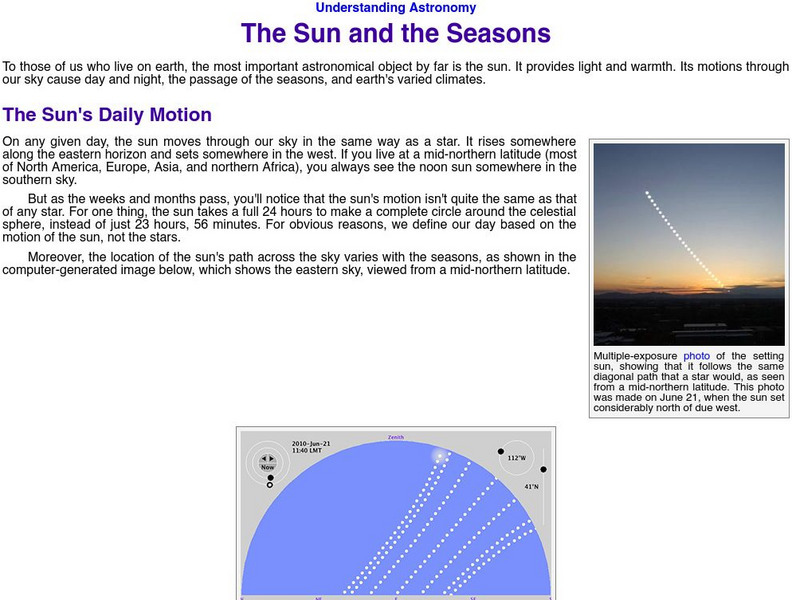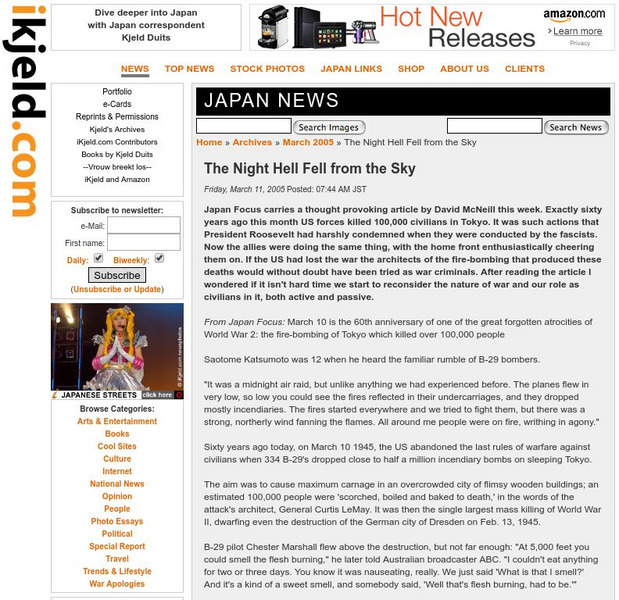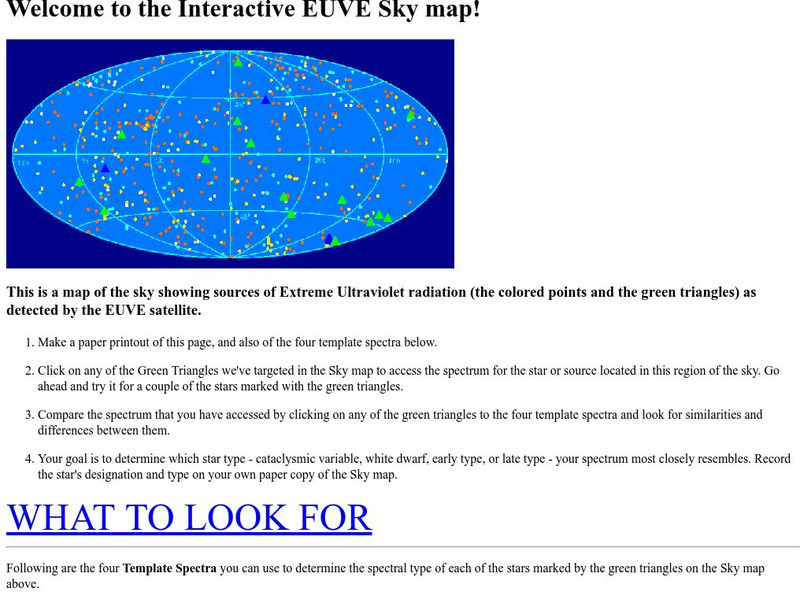Hi, what do you want to do?
The Wonder of Science
The Wonder of Science: 1 Ess1 1: Sun, Moon, and Star Patterns
The NSTA vetted source includes resources to help students describe patterns of the sun, moon, and stars using observation. Included are assessment ideas, videos, examples, lesson plans, and photos of student work.
Other
Weber State University: The Sun and the Seasons
To those of us who live on earth, the most important astronomical object by far is the sun. This article explains how the motion of the sun through our sky cause day and night, the passage of the seasons, and earth's varied climates.
PBS
Pbs: Rough Science Island Observatory
PBS site asks users to imagine that they are stranded on a tropical island. Provides experiments for users to calculate time at night and to identify what is in the night sky.
Other
Japan News: The Night Hell Fell From the Sky
A powerful article written for a Japanese publication about an event rarely touched in World War 2 history. That is the fire bombing of Tokyo, which killed over 100,000 on March 10th, 1945. Students of the Cold War might recognize some...
California Institute of Technology
Cool Cosmos: Ask an Astronomer
Explore the night sky with some help from Cool Cosmos. This site provides a list of the most frequently asked questions about the things we can see at night. Click on the question link and delve into the beauty of evening.
Blackdog Media
Classic Reader: Author: Edwin Arlington Robinson
This site features the author Edwin Arlington Robinson including the full text of three poetry collections: The Children of the Night, The Man against the Sky, and The Three Taverns.
Other
University of Leicester: Comets, Asteroids & Meteorites
Provides a general overview of comets, asteroids, and meteorites. Content includes ways to identify them in the night sky, as well as detailed information on each type of small body.
Science Buddies
Science Buddies: Changing Constellations
Do you like to look up into the night sky? There are so many stars, it can be mind boggling. Some ancient people marked time by the changes in star patterns. We still use changes in constellation patterns to mark astronomical time. This...
Globio
Glossopedia: Stars
Many of the objects you can see in the night sky are stars, large objects in space that produce light. Our galaxy, the Milky Way, contains more than 100 billion stars. Stars are so far away that their light does not reach us for years....
Other
Sunaeon: Solar System Scope
Experience the solar system as you've never seen it before; up close and personal. Visit each planet by clicking on it, then selecting the play button to track its rotations through the calendar year. Watch the constellations move...
Science Buddies
Science Buddies: Using a Digital Camera to Measure Skyglow
This is a great project for someone that is interested in both stargazing and photography. Bright city lights and even the light of the full moon obscure the dimmest stars, which can make identifying constellations more difficult. This...
PBS
Pbs Teachers: Voyage to the Mystery Moon
Observe the night sky and speculate the distance between the Earth and its moon and Saturn and its moon. Explore how scientists have used robots to learn about celestial bodies, and conduct research about one of Saturn's moons.
Other
Joseph Bruchac Home Page: Joseph Bruchac
This site is Joseph Bruchac's homepage. It provides links to his biography, a listing of his major works, and other online resources for the author. It also provides links to several of his poems to open or download on mp3.
E-learning for Kids
E Learning for Kids: Science: Egypt: Why Does the Sun Appear to Move Across the Sky?
Join Imhotep in his journey to figure out where the sun goes at night.
Other
Center for Science Education: Eye on the Sky: What Makes Day and Night?
This activity will allow you to model day and night cycles. A rotating student holding a map (provided) models the earth. A lamp is used to model the sun. Numerous worksheets (pdf) and additional website resources are also provided.
University of California
Interactive Extreme Ultraviolet Skymap
A map showing a view of the night sky is given; sources of extreme ultraviolet light are marked. Visitors analyze the spectrum from these parts of the sky and attempt to determine which star type the spectrum most closely resembles.
Read Works
Read Works: Stargazing
[Free Registration/Login Required] An informational text about stars in the night sky. A question sheet is available to help students build skills in reading comprehension.
CK-12 Foundation
Ck 12: First Grade Science: Telescopes
[Free Registration/Login may be required to access all resource tools.] Discusses how telescopes are constructed and how they are used to help see the night sky.
TED Talks
Ted: Ted Ed: How Plants Tell Time
Morning glories unfurl their petals like clockwork in the early morning. A closing white waterlily signals that it's late afternoon. And moon flowers, as their name suggests, only bloom under the night sky. What gives plants this innate...
TED Talks
Ted: Ted Ed: What Is an Aurora?
Why do we see those stunning lights in the northern- and southernmost portions of the night sky? Michael Molina explains every step of the dazzling phenomenon of the Aurora Borealis and Aurora Australis. [4:10]
ClassFlow
Class Flow: Moon and Sun
[Free Registration/Login Required] This flipchart could be a unit plan. It is broken down to observing and comparing the day and night sky, comparing the properties of the moon and the sun, and observing the pattern of the moon phases.
PBS
Star Map
This star map has five different constellations along with four newly discovered solar systems. If you are located in the northern hemisphere you can use this resource to locate stars.
Albright-Knox Art Gallery
Albright Knox Art Gallery: 3 D "Special Space" Painting
Jim Dine's Child's Blue Wall combines sculpture and painting. It is both a realistic depiction of a child's bedroom and an abstract painting of a night sky. This lesson plan explores how Dine accomplished these two ideas in the same work...
American Museum of Natural History
American Museum of Natural History: O Logy: Stuff to Do: Stargazing
Get started on the road to becoming an expert stargazer by following these recommendations for identifying stars, planets, and constellations. Includes an example of a journal that can be used as a record of your investigations.
Other popular searches
- Observing the Night Sky
- Observe the Night Sky
- Touring the Night Sky
- Navigating the Night Sky
- In the Night Sky
- Viewing the Night Sky
- Observing the Night Time Sky

























